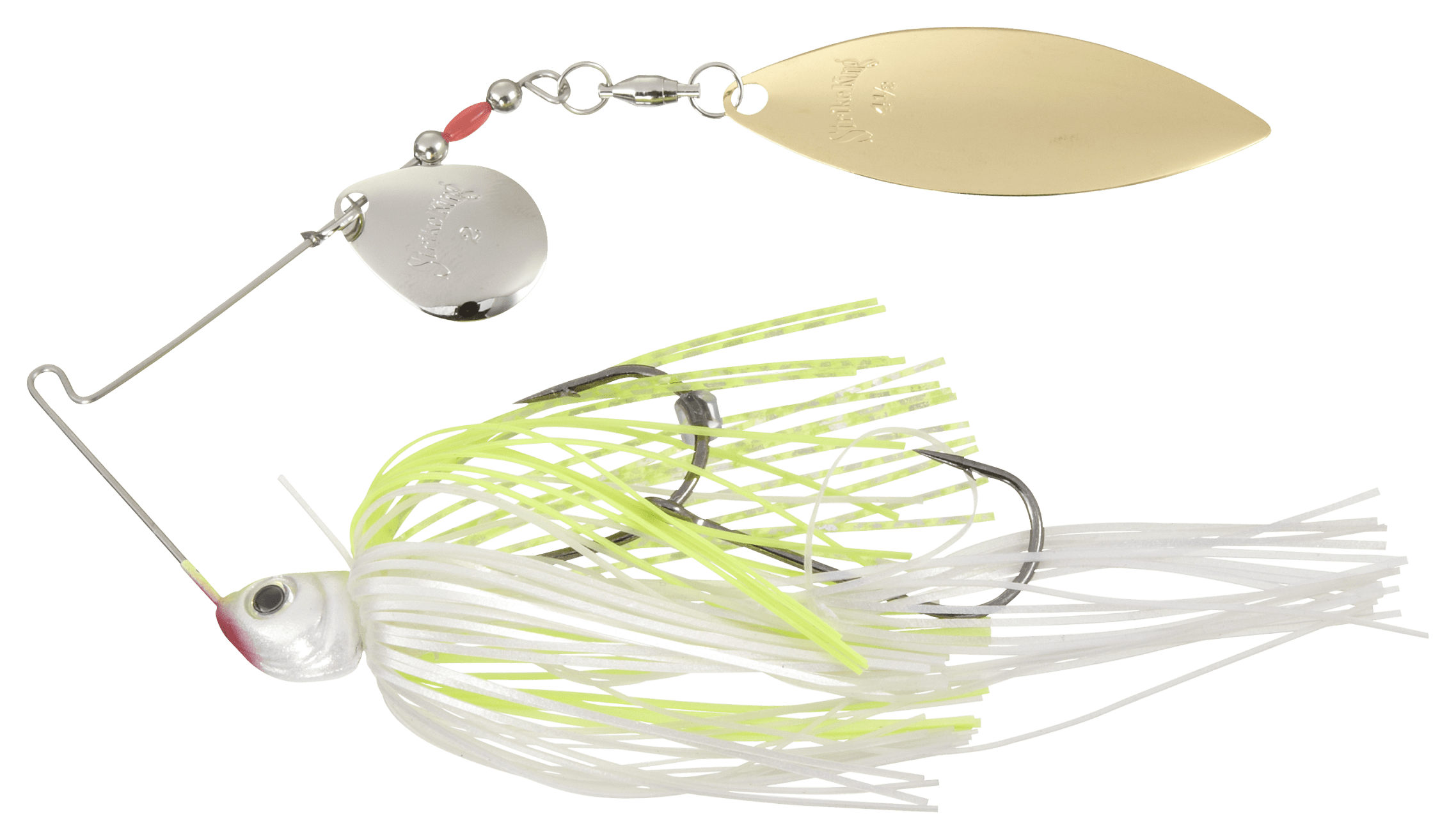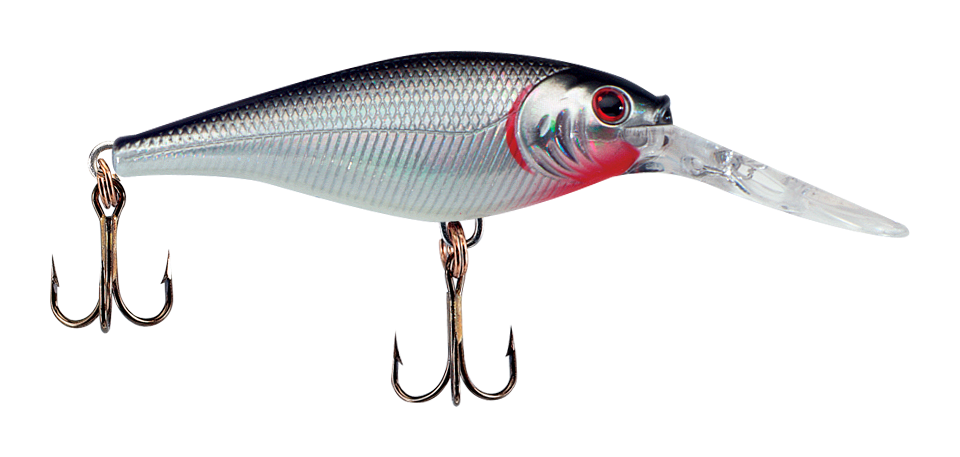To fish for bass in muddy water, use lures with strong vibrations or noise, such as spinnerbaits, chatterbaits, or square-bill crankbaits. Opt for dark, bold colors like black, blue, or chartreuse. Fish slowly and methodically, targeting cover and structure where bass are likely to be holding tight.
Water clarity is a pivotal factor when it comes to bass fishing and whether or not you’ll have success using certain lures and presentations. Just a small amount of rain can sometimes cause the water to become extremely muddy in some areas of the lake, but for others, it may only create stained water conditions.
In this article, I’ll explain some of the advantages and disadvantages of bass fishing in muddy water, as well as some of the best baits for fishing in muddy water.
This article is part of my Complete Guide to Bass Fishing series that you might be interested in.
| Technique/Lure | Situation |
|---|---|
| Spinnerbaits | Shallow cover, around structure |
| Chatterbaits | Around submerged vegetation, grass lines |
| Bright Colored Crankbaits | Bouncing off cover, such as rocks and wood |
| Jigs with Bulky Trailers | Flipping and pitching in heavy cover |
| Topwater Frogs | Over matted vegetation, lily pads |
| Soft Plastic Creature Baits | Texas-rigged around structure or vegetation |
| Vibrating Jigs | Submerged cover or through vegetation |
Table of Contents
Water Clarity and Bass Fishing
Water clarity is always a factor in terms of bass fishing and how effective certain lures and techniques will be. Some species like catfish seem to be unphased by muddy water, but bass are quite the opposite in many respects. Although their eyesight is not the best when compared to other freshwater fish species in North America, largemouth bass do rely on their sense of sight to detect prey and also to attack and eat their meals.
Water visibility for bass can greatly alter their behavior and other factors that can often be the difference-maker when it comes to developing a good fishing strategy. If there’s a good bit of rain in the forecast a few days prior to the day that you’re planning to go fishing, you might expect to encounter very stained or even muddy water.
This isn’t always a bad thing, as many expert anglers consider stained water to be best for bass fishing for a number of reasons that we’ll explain in greater detail later on. If the water is completely muddied and visibility is very low, bass may be extremely tough to catch—regardless of what lure or bait you’re using.
In the next few sections, I’ll explain more about what you can expect in terms of bass behavior in each type of water condition, as well as some of the top lure choices for bass fishing in muddy water.

Clear Water
Bass fishing in clear water isn’t always a good thing. Many anglers know that fishing in very clear water is often very difficult as bass have acute eyesight and can distinguish artificial lures from the real prey that they normally target.
Clear water conditions are usually anything that’s 8 feet or more in terms of visibility. If you’re fishing in clear water, it’s a good idea to stick to lures that have a very realistic appearance and avoid using brightly colored lures that are unnatural.
Lightly-Stained Water
Many anglers consider lightly-stained water to be some of the best bass fishing at certain times of the year. If the water is lightly-stained, you can get away with using a lure that’s not exactly realistic in appearance, as well as a few other factors like your lure’s movement and other aspects. Some lakes might be perpetually stained to a slight degree based on certain kinds of algae and sediment in the water.
If you’re fishing in lightly stained water, you can usually catch fish just about anywhere there are depth changes. Bass will be using their eyesight to locate and devour prey and they are still capable of seeing fairly well, even in lightly stained water.
Stained Water
In my personal opinion, stained water is the best water condition for bass fishing for a number of reasons. Stained water is usually anything from 2 to 4 feet of visibility and it allows you to leverage brightly-colored lures in a way that entices bass to bite them when they might normally pass up the opportunity.
Brighter oranges and chartreuse colors work wonders in stained water and you can usually be certain that most bass will either be holding up next to certain types of cover, or hanging around depth changes like ledges, shelves, and points.
When fishing in stained water, it’s a good idea to use lures that incorporate noise or vibration into their presentation as this will often help grab the attention of bass. Most fish are aware that, when the water visibility is stained, they only have a split second to decide whether or not to bite, unlike in clear water conditions when they will stop and examine their prey before attacking. You can use this ambush mentality to your advantage by fishing with the right lures and in the right locations to maximize your efforts.
Muddy Water
Bass fishing in muddy water is often a major challenge, even for the most experienced anglers. In my home state of Georgia, it’s typical to have spring and summer rains wash a very heavy amount of sediment into major lakes and rivers, making it very tough to fish. If you’re going to catch bass when the water visibility is less than 2 feet, you’ll need to get creative.
Go for lures that give off a lot of noise or vibration as this will be the main factor that often determines whether a bass bites or not. Spinnerbaits that have Colorado blades will be a solid choice and anything else that is very flashy and loud. Try fishing with bigger lures as this will help provide extra vibration and will also increase your chance for hooking bass that do strike.
Fishing in muddy water conditions is the time when you want to use those obnoxiously-bright lures that have been sitting in your tackle box for a while. Pink, blaze orange, neon green or chartreuse and neon reds are often good color choices for any type of lure. I usually rely on a large chatterbait or spinnerbait when conditions are very muddy, but certain crankbaits and others might work if they closely resemble the prey that bass are targeting.
If you feel strongly that bass will be feeding on prey that you can best mimic using soft plastic lures, be sure to use tungsten weights. Tungsten is a much more dense, harder metal than lead and it will give off a ‘ticking’ sound when it contacts rocks or wood on the bottom, which also works to alert bass to their presence. This subtle clicking sound actually mimics the soft noises that baitfish produce when they are feeding on the bottom, so Neko rigs, Texas rigs, Carolina, Tokyo rigs, and others should always be used with tungsten in very muddy conditions.
Best Lures for Bass Fishing in Muddy Water
As we’ve already touched upon, there are certain lures that will perform better when conditions are exceptionally muddy as opposed to when you’re fishing in lightly-stained water. If you adapt accordingly, you can actually catch more fish when the water is overly muddy as opposed to fishing in clear conditions. Here are some lures to keep in mind for days when the water is muddy.
Spinnerbaits
Spinnerbaits combine every aspect of presenting an effective lure in muddy water. It produces a bright, flashy visual effect due to the spinning of the blades and you can really leverage this lure’s vibration by fishing with spinnerbaits that have Colorado blades on them. Try to use a larger spinnerbait when fishing in muddy water.
Chatterbait
A very close second to the spinnerbait, the chatterbait is often my go-to when I’m fishing in muddy water as it seems to have the ability to draw more reaction bites than a spinnerbait. A chatterbait doesn’t produce as much flash when it’s being retrieved, but you can gain attention from bass by reeling it in slowly, which creates a more deliberate clicking sound along with good vibration.
Crankbaits
Most anglers would shy away from using crankbaits in muddy water as you’re likely to get hung up on brush or other submerged cover that you often can’t see when the water is muddy. Square bill crankbaits are key for fishing in muddy water as they put off more vibration than round bill cranks and they have the distinct ability to bounce off rocks, logs, and other cover without getting snagged.
Football Jig
If you’re certain that bass are holding tightly around cover like brush piles and logs, try fishing with a large football jig that also has a trailer. This approach will be large and heavy, but it is usually a good one for targeting bass that are deep within cover. Be sure to use a tungsten jig head for the reasons listed above.
Texas Rig
You can never go wrong using a Texas-rigged soft plastic worm in muddy water. I always use bigger worms that are at least 10 inches in length when fishing in muddy conditions. Be sure to include a tungsten bullet weight with your Texas rig as it will produce the clicking sounds along with better sensitivity for feeling bites.
Conclusion
Bass fishing in muddy water isn’t always difficult. If you’re willing to adjust your strategy and try a few of the tried-and-true techniques and tactics we’ve mentioned in this article, you should have what you need to be on your way to success.



